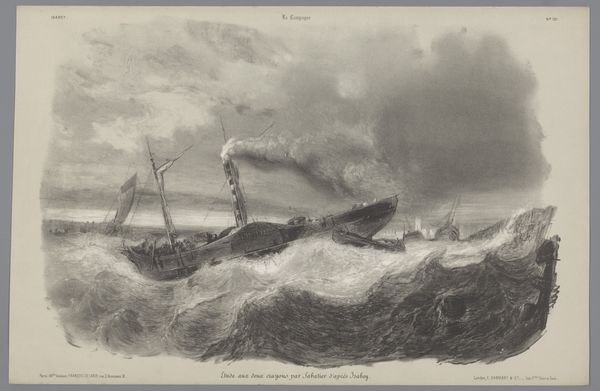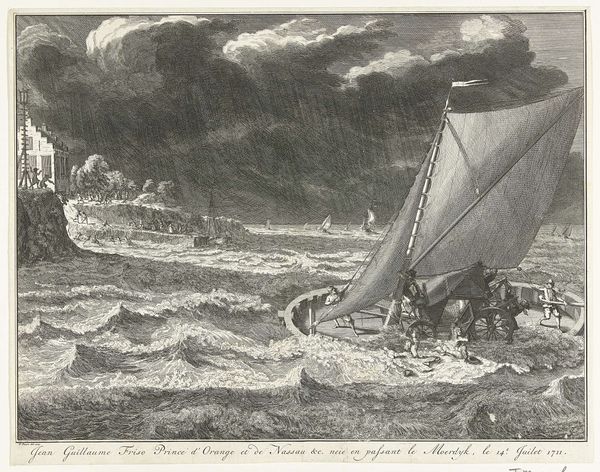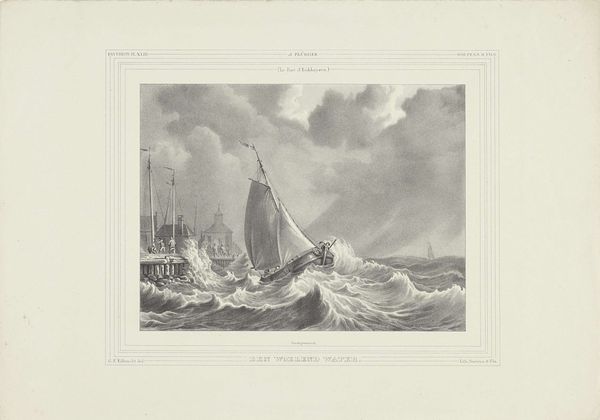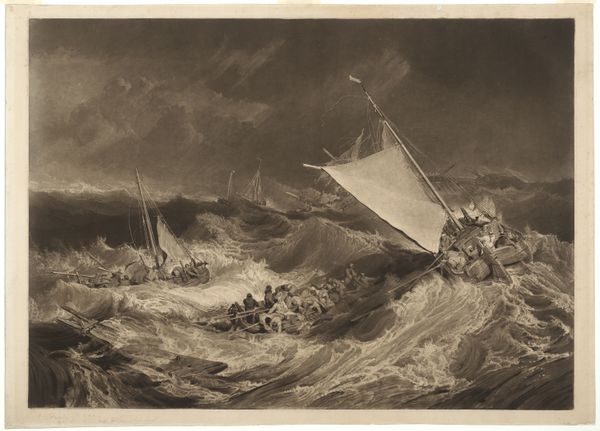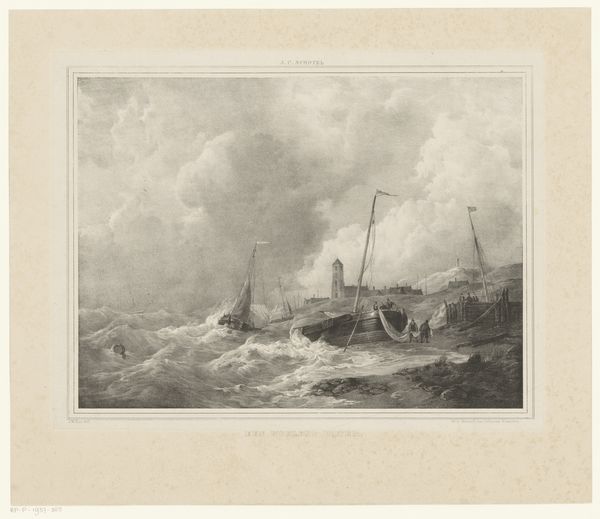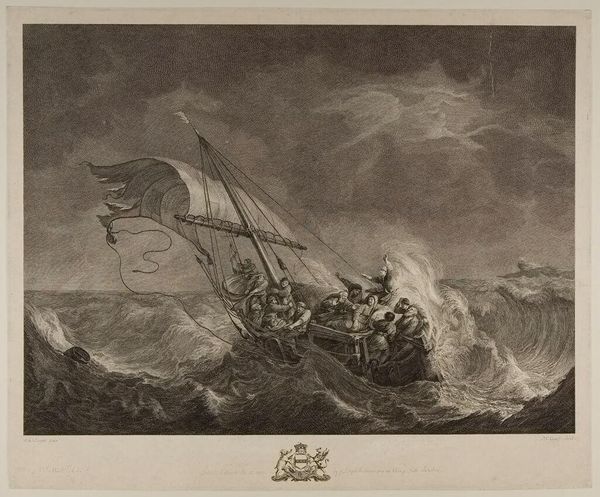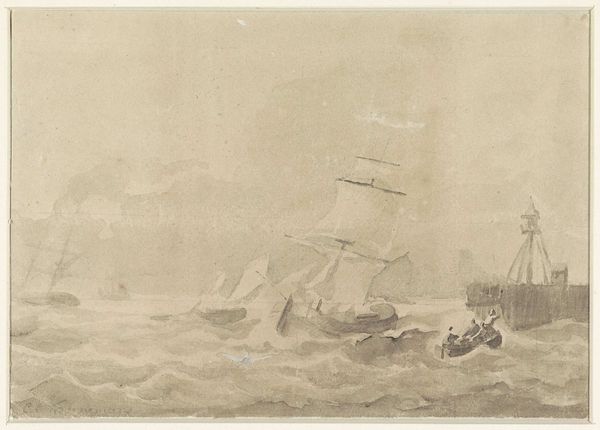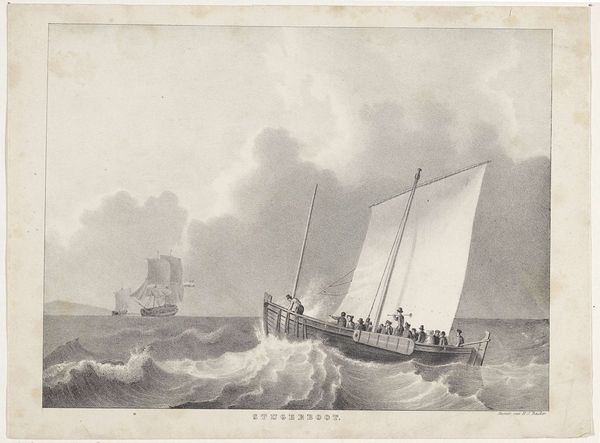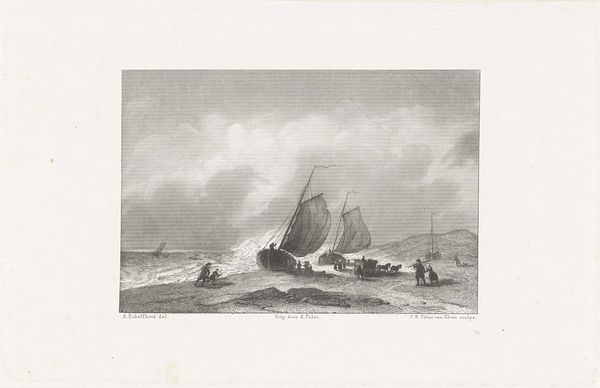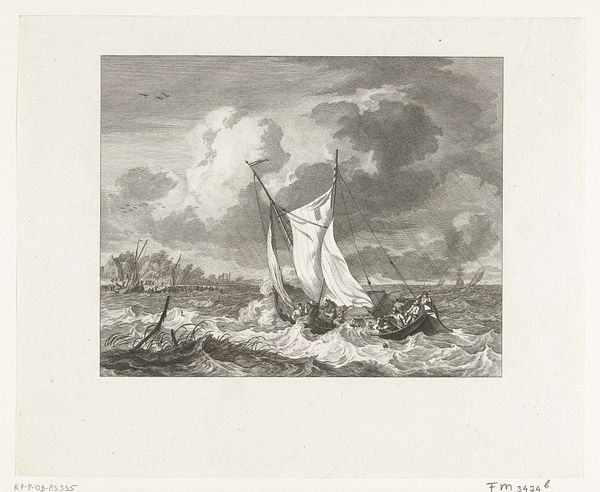
Stranding van de Oostenrijkse Brik Pegno d'Amicizia (...) tegen de steile punt van den Ooster, buiten het Goedereesche Zeegat, in den avond van den 25 October 1852 1852 - 1853
0:00
0:00
Dimensions: height 375 mm, width 487 mm
Copyright: Rijks Museum: Open Domain
Carel Christiaan Antony Last created this lithograph depicting the Stranding van de Oostenrijkse Brik Pegno d'Amicizia in 1852. Lithography, a printmaking technique, is rooted in the use of porous limestone and greasy materials. The process begins with a smooth stone surface, on which an image is drawn with a grease pencil. The stone is then treated with acid, making the design receptive to ink. When printed, the greasy ink adheres only to the drawn areas, transferring the image to paper. Here, Last masterfully uses lithography’s tonal range to create a dramatic scene. The stark contrast between light and shadow emphasizes the ship's vulnerability against the raging sea. The rough texture of the waves conveys their untamed power. Lithography, as a relatively inexpensive method of printmaking, played a crucial role in democratizing art. It allowed for wider dissemination of images, reaching audiences beyond the elite. Last’s choice of this medium connects the artwork to broader social issues of accessibility and the burgeoning print culture of the 19th century. Ultimately, considering the materials and processes through which the image was made gives us a better understanding of its cultural impact.
Comments
No comments
Be the first to comment and join the conversation on the ultimate creative platform.

